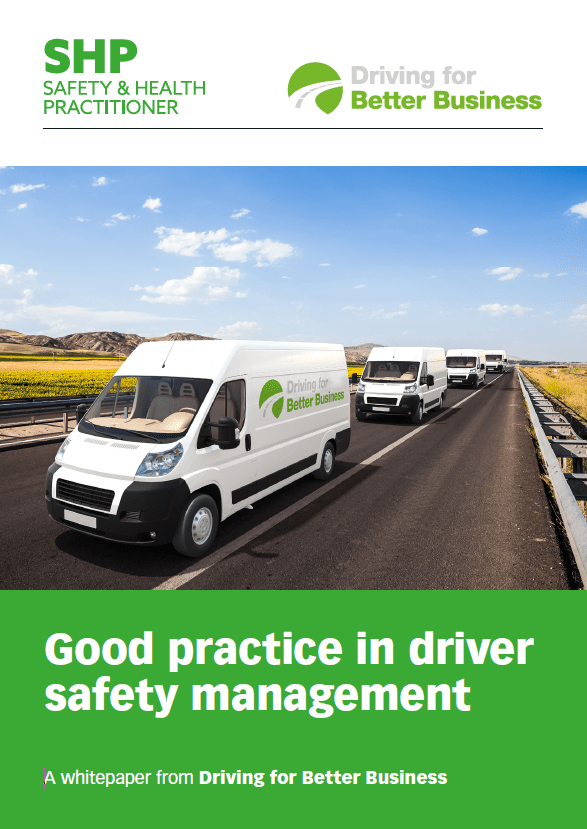 With roadside drug testing now in force across the UK, what affect is new legislation having upon the transport and logistics industries? Dr Philip Kindred, technical service manager from Synergy Health Laboratory Services (SHLS), explores how training and the development of health and safety policies can combat potential problems.
With roadside drug testing now in force across the UK, what affect is new legislation having upon the transport and logistics industries? Dr Philip Kindred, technical service manager from Synergy Health Laboratory Services (SHLS), explores how training and the development of health and safety policies can combat potential problems.
It goes without saying that an understanding of the effect of drugs in the workplace and an effective drug and alcohol policy is of vital importance to health and safety decision makers within any industry. The use and abuse of illegal or illicit drugs amongst a workforce can have serious implications for both employees and organisations.
At best, production and morale can experience disruption and in worst-case scenarios, drug induced accidents could cause injury and potentially death. The need to have an air-tight policy in place increases within high-risk industries: particularly those that involve frequent travel or the operation of heavy machinery.
Within transport and logistics industries it is imperative that drug and alcohol policies be as air-tight as possible to ensure the safety of the public and the existing workforce. It goes without saying that staff within this industry coming to work with alcohol or drugs in their system potentially present a significant risk, but what can be done by organisations to prevent this risk and potential drug use having such an impact on their employees, clients and potentially the general public?
Chartered Institute of Personnel and Development (CIPD) figures [1] estimate that drugs and alcohol play a role in around a quarter of UK workplace accidents – and yet many employers are unsure how to frame an effective drugs and alcohol policy – or indeed how to enforce it. CIPD figures suggest that just one third of employers train managers in how to tackle these sort of issues.
Furthermore, corporate manslaughter legislation now places great emphasis on management’s duty of care to employees, encouraging employers to execute a drug and alcohol policy that incorporates thorough testing programmes to mitigate risk. To this end, employers have the law on their side. Already high on the agenda, the issue of drug-driving has been thrust into in the public eye since the introduction of roadside drug testing for cannabis and cocaine in March.
Historically, it has been difficult for the authorities to arrest and prosecute individuals for driving under the influence of drugs, with the onus being placed upon forces to prove ‘impairment’ due to drugs. However, due to the recent legislation, along with the invention of ‘drugalyser’ devices that test for traces of drugs in saliva – roadside drug testing now operates much the same way as a breathalyser test for alcohol consumption. A simple, rapid roadside test can now be used in combination with a blood test to prove the presence of illegal substances in an individual’s system.
Since its launch earlier this year, the initial results gleaned from roadside drug testing are already raising eyebrows with figures in some regions suggesting a 56 per cent rate of positive test results following roadside stops by local police forces. [2] While much of this data is likely to be based on ‘for-cause’ testing as opposed to random testing, the fact remains that drug-driving is fairly widespread – and the implementation of roadside testing is bringing to the fore the extent to which it takes place. What’s more, whilst currently testing only for cocaine and cannabis, the current technology has provisions to test for additional substances pending approval of this expansion from the Home Office Centre for Applied Science and Technology (CAST).
Controversially, this could mean that it’s possible that we see roadside testing for other substances, including testing for inappropriate use (against medical advice) of prescription medications commonly used to treat anxiety, insomnia or pre-existing drug addictions. The new regulations allow for detection of low levels of eight illegal drugs, with higher levels set for nine prescription drugs, including morphine and methadone. In relation to legal prescription drugs, the tests would identify cases where levels of medications clearly indicate substance abuse, meaning that those using prescription drugs with recommended amounts will not be penalised.
Despite ever-increasing technology and legislation, random testing in the workplace is not currently mandatory for workers operating dangerous equipment such as heavy vehicles or machinery, however, organisations can still put into place a solid workplace drug and alcohol policy, which if sufficient, serves to not only protect employees and the public from harm, but also to protect the reputation of the employer.
With all of this in mind, the most pressing question might be this: how should health and safety executives implement provisions for drug and alcohol testing into their policies to best protect their employees, the public, and the reputation of the company itself?
In-house health and safety policies can take inspiration from this recent legislation. Rather than focusing on levels of impairment, or how far different amounts of a specified substance could affect an individual’s ability to carry out their duties safely, here at Synergy Heath, we would suggest that policies clearly state a firm and transparent approach to the presence of illegal substances – or acceptable levels of legal substances – within an employee’s system. Quite often people may not be aware of how drugs in their system can continue to impair their performance for days after consumption. The residual presence of such substances in the body alone should be enough to prevent them from operating life-threatening machinery – as opposed to the possible level of debilitation.
A comprehensive policy helps to reduce accidents, long-term sickness and compensation claims, and reduction in insurance risk, whilst providing complete guidance for company employees. This methodology will allow employers to avoid the current ‘grey area’ approach to the impact of both recreational and dependency drug use on a person’s role at work. By focussing on the cut-and-dried, measurable science behind substance abuse, an uncompromising policy can protect a company from speculative argument employee tribunals and courtrooms.
 Dr Kindred BSc PhD MRSC is technical services manager at Synergy Health
Dr Kindred BSc PhD MRSC is technical services manager at Synergy Health
References
[1] CIPD statistics: Managing Drug and Alcohol Misuse at Work Survey Report (2007)
[2] Roadside drug test results: Freedom of Information Request, 2015
This eBook will guide you through some of the key understandings you need to be able to manage driver safety effectively and, at the end, provide a series of free resources you can access to help you ensure your own driver safety management system is robust, legally compliant and in line with industry-accepted good practice.
Download this eBook from Driving for Better Business and SHP to cover:
- Why do we need to manage driver safety?
- Duty of care – a shared responsibility;
- Setting the rules with a driving for work policy;
- Managing driver safety;
- Ensuring safe vehicles;
- Safe journeys and fitness to drive;
- Record keeping;
- Reporting;
- The business benefits of good practice;
- Additional resources




[…] Implementing a drug and alcohol policy in transport and logistics – It goes without saying that an understanding of the effect of drugs in the workplace and an effective drug and alcohol policy is of vital importance to health and safety decision makers within any industry. The use and … […]
[…] Implementing a drug and alcohol policy in transport and logistics – It goes without saying that an understanding of the effect of drugs in the workplace and an effective drug and alcohol policy is of vital importance to health and safety decision makers within any industry. The use and … […]
[…] Implementing a drug and alcohol policy in transport and logistics – … of the effect of drugs in the workplace and an effective drug and alcohol policy is of vital importance to health and safety decision makers within any industry. The use and abuse of illegal or illicit drugs amongst a … […]
[…] Implementing a drug and alcohol policy in transport and logistics – It goes without saying that an understanding of the effect of drugs in the workplace and an effective drug and alcohol policy is of vital importance to health and safety decision makers within any industry. The use and … […]